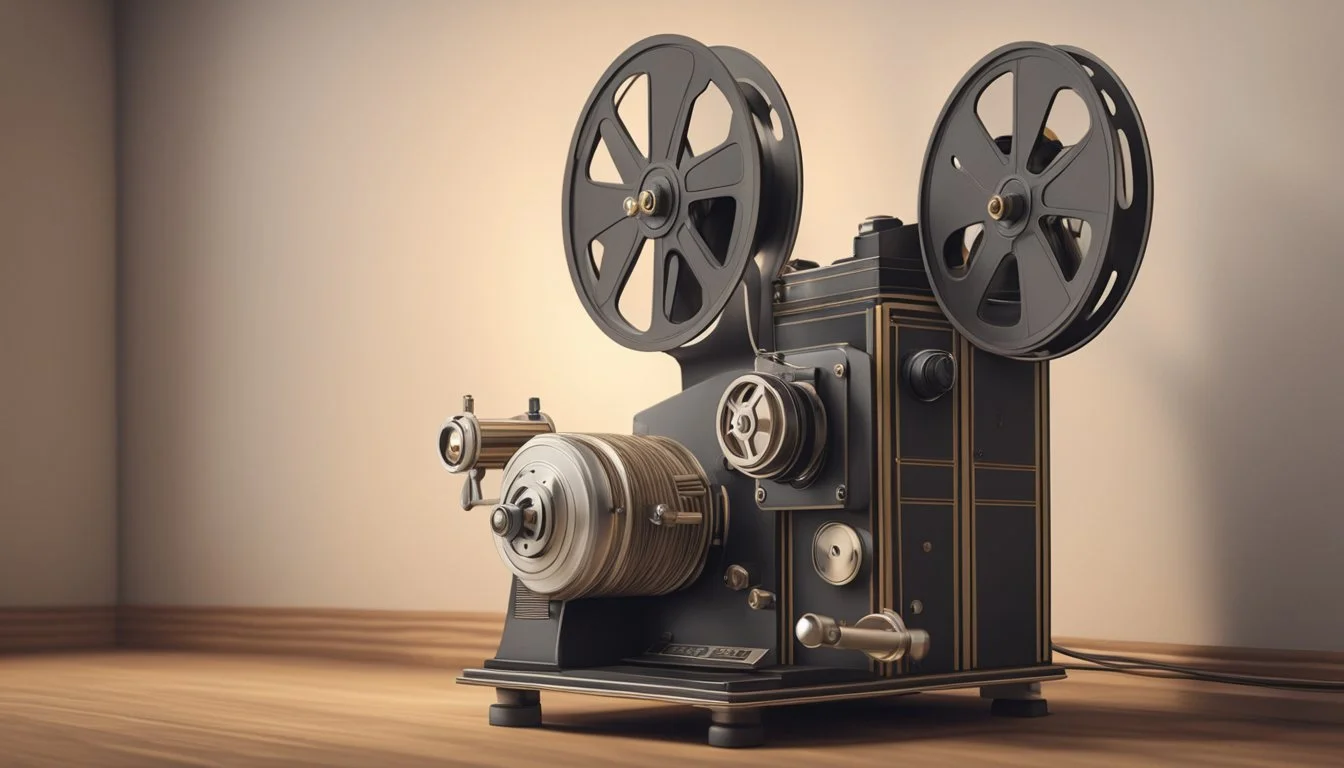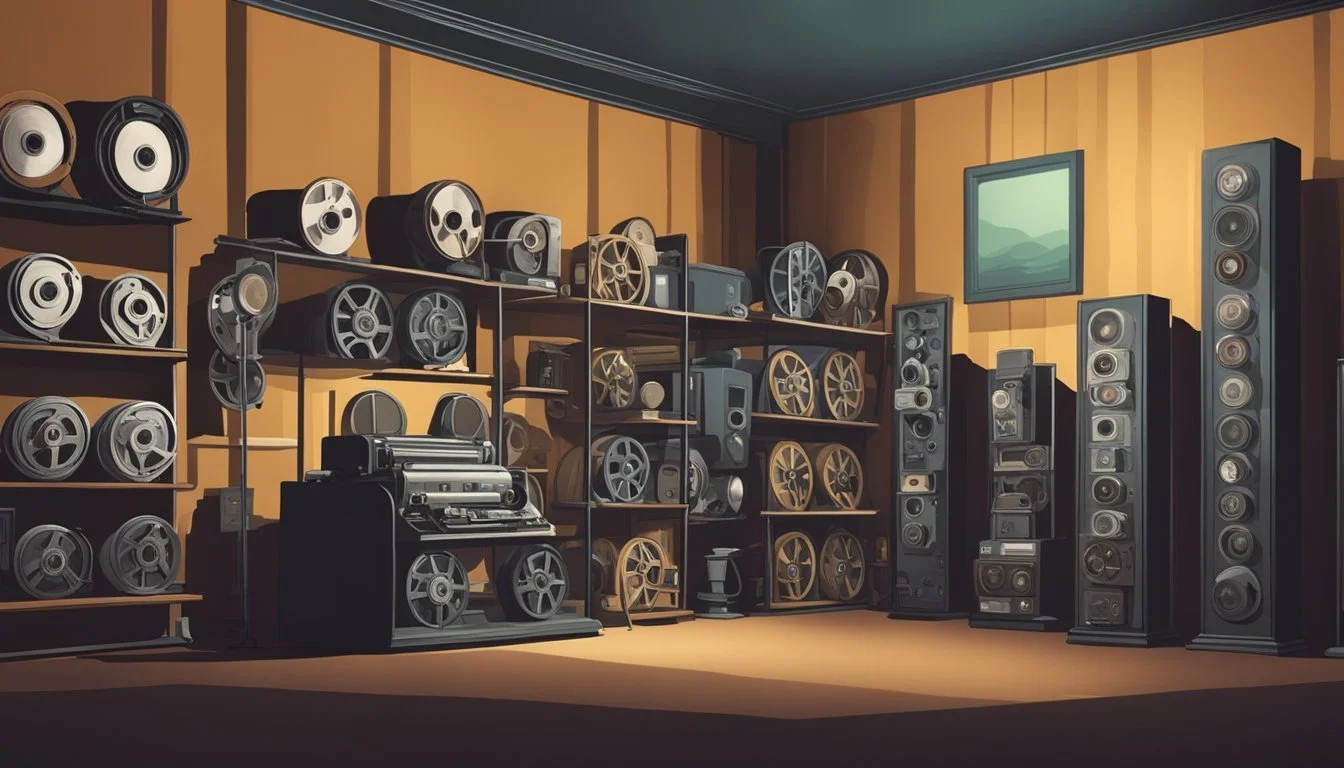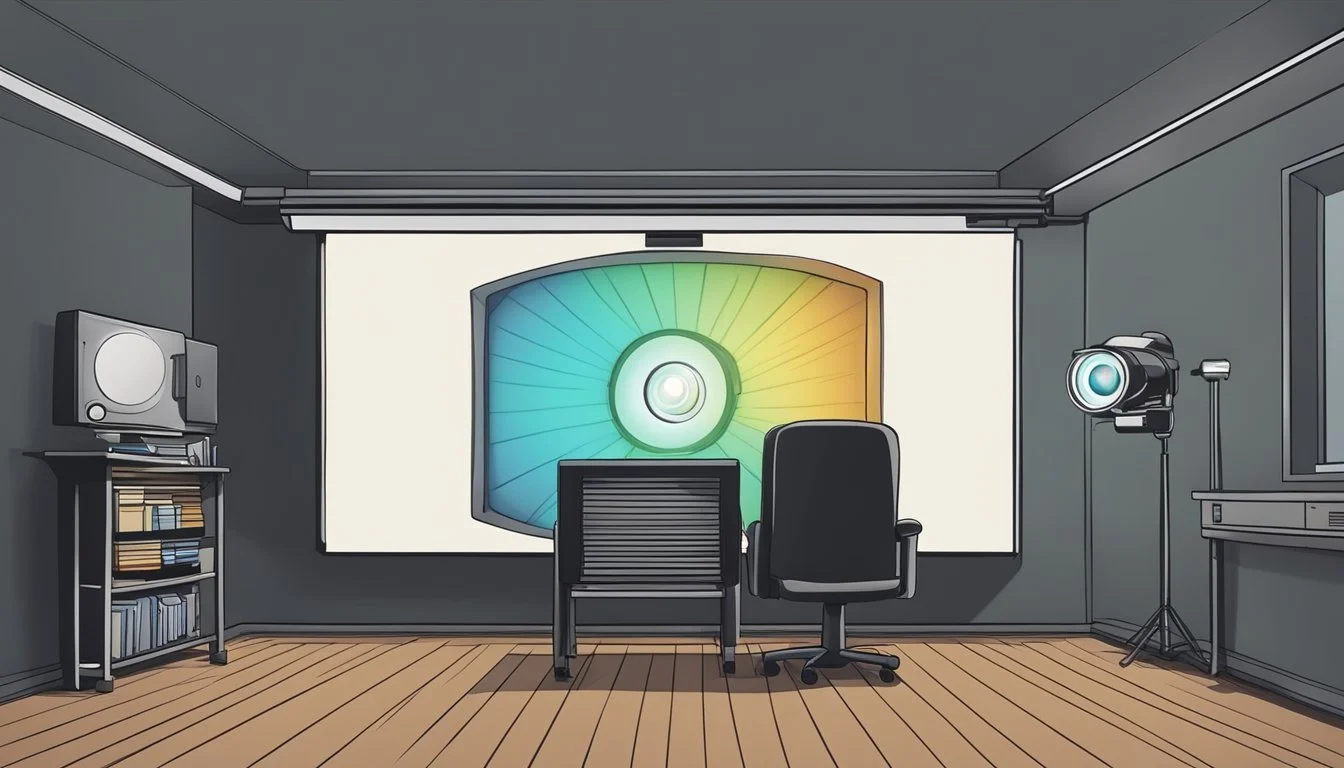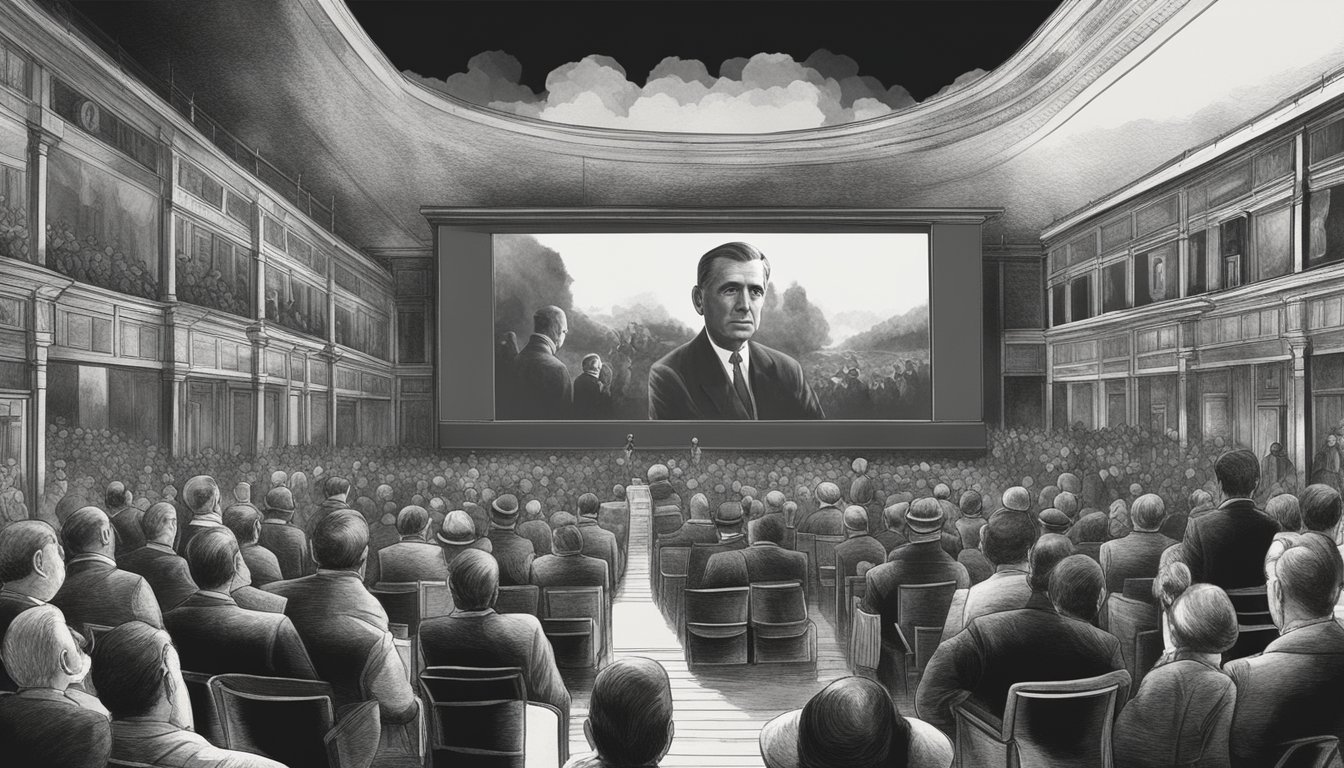Analyzing the Use of Archival Footage in American Nightmare
A Critical Examination of Documentary Techniques
The Netflix docuseries "American Nightmare" captivated audiences with its gripping portrayal of a real-life case that defied belief. Through skillful visual storytelling, the series transformed a complex narrative into a compelling viewing experience. Archival footage played a crucial role in bringing authenticity and depth to the storytelling, allowing viewers to immerse themselves in the events as they unfolded.
Incorporating news reports, police interrogation videos, and other historical materials, the directors created a rich tapestry of information that supplemented the interviews and reconstructions. This approach not only provided valuable context but also lent credibility to the victims' accounts, reinforcing the importance of physical evidence in complex criminal investigations.
The use of archival footage in "American Nightmare" serves multiple purposes, from establishing the timeline of events to capturing the public's reaction and media coverage at the time. By weaving these elements into the narrative, the series offers viewers a comprehensive look at the case, its impact on the community, and the broader implications for law enforcement practices and media reporting.
Foundations of Archival Footage
Archival footage forms the backbone of many documentaries, providing visual evidence and historical context. Its use has evolved significantly over time, shaping the landscape of American documentary filmmaking.
Evolution of Archival Footage in Documentaries
Archival footage emerged as a powerful tool in documentaries during the early 20th century. Initially, filmmakers relied on newsreels and government archives for historical content.
As technology advanced, the scope of archival material expanded. Home videos, amateur recordings, and digitized collections became valuable resources for documentarians.
The digital age revolutionized access to archival footage. Online databases and digital restoration techniques allowed filmmakers to incorporate a wider range of historical material into their works.
Ethical considerations surrounding the use of archival footage grew. Filmmakers became more conscious of context, authenticity, and the potential for manipulation when using historical visuals.
Importance in American Documentary Filmmaking
Archival footage plays a crucial role in American documentaries, providing visual evidence to support narratives and enhance storytelling.
It allows filmmakers to transport viewers to specific time periods, offering authentic glimpses into historical events and cultural moments.
In films like "American Nightmare," archival material can create a sense of immediacy and realism, bridging the gap between past and present.
Documentarians use archival footage to challenge official narratives, presenting alternative perspectives on historical events and societal issues.
The integration of archival content with contemporary footage creates a powerful juxtaposition, highlighting changes and continuities in American society over time.
Case Study: The American Nightmare
The Netflix docuseries "American Nightmare" presents a shocking true crime story that captivated audiences. It skillfully weaves together archival footage and interviews to recount an extraordinary kidnapping case.
Synopsis of the American Nightmare
"American Nightmare" explores a 2015 kidnapping in Vallejo, California. The series uses police interrogation videos, news reports, and courtroom footage to reconstruct events. These archival elements provide crucial context and authenticity to the narrative.
The docuseries challenges initial assumptions about the case. It presents conflicting accounts from law enforcement and the victims. Archival news clips show how media coverage evolved as new details emerged.
Denise Huskins and Aaron Quinn's Story
Denise Huskins and Aaron Quinn faced disbelief after reporting Huskins' kidnapping. The series incorporates home videos and family photos to humanize the couple. These personal archives contrast sharply with harsh police interrogation footage.
Archival news reports initially cast doubt on their story. The series uses these clips to illustrate the public scrutiny they endured. Later footage shows the vindication of Huskins and Quinn when the true perpetrator was caught.
Interviews with the couple provide firsthand accounts. These are interspersed with archival material to create a compelling narrative arc. The series effectively uses this mix to expose the flaws in the initial investigation.
Archival Footage in True Crime Storytelling
Archival footage plays a crucial role in true crime documentaries, enhancing storytelling and providing historical context. It serves as a powerful tool for filmmakers to engage audiences and present factual evidence.
Role in Evoking Emotion and Building Narrative
Archival footage transports viewers to the time and place of the crime, creating an immersive experience. News clips, police interviews, and courtroom proceedings add authenticity and bring past events to life. This visual evidence helps build a compelling narrative arc, allowing audiences to connect with the story on an emotional level.
Filmmakers often use archival material to establish timelines and highlight key moments in investigations. By juxtaposing contemporary interviews with historical footage, documentarians create a rich tapestry that deepens viewers' understanding of complex cases.
Careful selection and placement of archival content can also build tension and suspense. Revealing crucial pieces of evidence through period-appropriate visuals keeps audiences engaged and invested in the unfolding story.
Ethical Considerations and Fair Use
The use of archival footage in true crime documentaries raises important ethical questions. Filmmakers must balance the need for compelling storytelling with respect for victims, their families, and the legal process.
Obtaining proper permissions and adhering to fair use guidelines is essential. Documentarians should consider:
The impact on victims and their families
Potential prejudice to ongoing investigations or legal proceedings
Accuracy and context of the footage used
Responsible use of archival material involves providing appropriate context and avoiding sensationalism. Filmmakers should strive to present a balanced view, using footage to illuminate truth rather than exploit tragedy.
Ethical considerations extend to the treatment of suspects and convicted individuals. Care must be taken to avoid re-victimization or undue harm to those involved in the case.
Analyzing the Vallejo Kidnapping
The Vallejo kidnapping case shocked the public and challenged law enforcement assumptions. It involved a complex series of events that unfolded over several days and generated intense media scrutiny.
Timeline and Investigation of the Crime
On March 23, 2015, Denise Huskins was abducted from her boyfriend Aaron Quinn's home in Vallejo, California. Quinn reported the kidnapping to police 12 hours later, claiming he had been drugged. Initially, authorities were skeptical of Quinn's account.
Huskins reappeared 400 miles away in Huntington Beach two days later. Police publicly declared the kidnapping a hoax. This premature conclusion severely hampered the investigation.
Months later, DNA evidence linked the crime to Matthew Muller, a disbarred lawyer. He was arrested in June 2015 for a similar home invasion. The FBI took over the case, uncovering Muller's elaborate scheme.
Public Perception and Media Coverage
The media's initial portrayal of the case as a "Gone Girl" scenario damaged Huskins and Quinn's credibility. News outlets widely reported police statements dismissing the kidnapping as fake.
Public opinion shifted dramatically after Muller's arrest. The couple's ordeal gained sympathy as details of law enforcement's mishandling emerged. Netflix's "American Nightmare" docuseries later brought renewed attention to the case.
The series used archival footage to highlight the media frenzy and changing narratives. It exposed flaws in the initial investigation and the impact of hasty public statements by authorities.
Representation of the Justice System
American Nightmare's use of archival footage shapes viewers' perceptions of the justice system. The series highlights key interactions between law enforcement, victims, and the legal process.
Influence on Public Opinion and Policymaking
Archival footage in American Nightmare exposes flaws in the justice system's handling of the case. News clips and police interviews reveal initial skepticism towards the victims' claims. This portrayal may erode public trust in law enforcement's ability to assess complex situations.
The series includes footage of press conferences and official statements. These clips demonstrate how authorities communicated with the public during the investigation. Viewers see firsthand how misinformation spread, potentially influencing policy discussions on victim treatment and false reporting.
Courtroom footage and legal documents showcase the judicial process. This visual evidence allows audiences to critically examine how the justice system operated in this case.
The Role of Law Enforcement Portrayal
American Nightmare's archival footage presents a nuanced view of law enforcement. Police body cam videos and interrogation tapes offer raw glimpses into officer conduct and decision-making. These unfiltered moments can shape public perception of police competence and ethics.
The series includes training videos and departmental memos. Such footage provides context for police procedures and protocols. Viewers gain insight into the systemic factors that influenced the case's mishandling.
Archival interviews with detectives and prosecutors reveal their thought processes. This footage humanizes law enforcement while exposing potential biases. It prompts viewers to consider the challenges and pressures faced by those working within the justice system.
Narrative Construction in Crime Documentaries
Crime documentaries employ various techniques to craft compelling narratives that engage viewers while presenting factual information. These methods shape how audiences perceive and interpret real-life criminal cases.
Use of Home Movies and Personal Archives
Home movies and personal archives play a crucial role in humanizing subjects and providing intimate glimpses into their lives. Filmmakers often incorporate family videos, photographs, and personal mementos to create emotional connections between viewers and the individuals involved in criminal cases. These materials can reveal personality traits, relationships, and life circumstances that may have influenced events.
Camera angles in home footage tend to be informal, adding authenticity to the narrative. Personal archives also serve as visual timelines, allowing documentarians to trace a subject's life trajectory leading up to pivotal moments. By juxtaposing these personal materials with more formal elements, filmmakers create layered narratives that balance emotional impact with factual presentation.
The Impact of Reenactments and Dramatizations
Reenactments and dramatizations are powerful tools in crime documentaries, bringing past events to life and filling visual gaps where no actual footage exists. These staged scenes help viewers visualize complex scenarios, timelines, or hypothetical situations. Directors carefully craft these segments to maintain credibility while enhancing the narrative's dramatic elements.
Camera angles in reenactments often mimic documentary-style filming to blend seamlessly with authentic footage. The use of actors, lighting, and set design in dramatizations can significantly influence audience perceptions of events and individuals. While reenactments risk introducing bias, they can also clarify confusing aspects of a case and make abstract concepts more tangible for viewers.
Societal Commentary through Archival Media
Archival footage in "American Nightmare" serves as a powerful tool for critiquing societal issues. It juxtaposes historical media with contemporary events to highlight persistent inequalities and challenge idealized notions of the American Dream.
Exposing Inequality and the American Dream
The documentary leverages archival media to reveal long-standing disparities in American society. Vintage advertisements and news clips portray an idyllic vision of prosperity and opportunity. These are contrasted with modern footage showing economic hardship and social unrest.
This juxtaposition exposes the gap between the promised American Dream and the harsh realities faced by many. Historical images of suburban bliss clash with contemporary scenes of foreclosed homes and struggling families.
Archival political speeches praising American exceptionalism are interwoven with recent clips of protests against systemic racism and economic inequality. This technique emphasizes how certain issues have persisted or worsened over time.
In-depth Analysis of Case Specifics
The documentary delves into specific criminal cases, using archival media to provide context and highlight societal patterns. News footage from past decades is employed to show how similar crimes or injustices have occurred repeatedly.
Court records and police reports from the Internet Archive are incorporated to trace the history of law enforcement practices. This helps illustrate how certain communities have been disproportionately targeted or underserved over time.
Archival interviews with past victims or their families are presented alongside contemporary testimonies. This approach demonstrates the long-term impact of criminal acts on individuals and communities.
The film also uses historical data visualizations and infographics to track trends in crime rates, incarceration, and socioeconomic factors. These elements provide a data-driven backdrop for the personal stories featured in the documentary.
Impacts of Digital Archives and Accessibility
Digital archives have transformed how footage is preserved and accessed, reshaping societal expectations around privacy and information availability. This shift has wide-ranging implications for documentary filmmaking and public discourse.
Home Videos to Digital Footprints
Digital archiving has expanded the pool of available footage for documentarians. Home videos once stored in physical formats are now easily digitized and shared online. The Internet Archive preserves millions of videos, images, and web pages, creating a vast repository of potential source material.
This accessibility allows filmmakers to uncover rare footage and build more comprehensive narratives. However, it also raises ethical questions about privacy and consent. Individuals may not have anticipated their personal videos becoming publicly accessible decades later.
Social media platforms act as de facto digital archives, with users' posts and images preserved indefinitely. This digital footprint can be mined for documentary content, blurring lines between public and private spheres.
Changing Societal Norms and Expectations
The ubiquity of digital archives has shifted societal norms around privacy and information access. There's a growing expectation that all information should be freely and instantly available online. This mindset influences how audiences engage with documentaries and evaluate source materials.
Viewers now expect filmmakers to uncover obscure footage or documents to support their narratives. The inability to find certain information can be seen as a shortcoming rather than a natural limitation of historical records.
Digital archives have also changed how we view the permanence of information. The idea that "the internet never forgets" has made people more cautious about what they share online, potentially limiting future documentary source material.
These shifts present both opportunities and challenges for documentary filmmakers navigating the ethical and practical implications of digital archiving.
Conclusion
Archival footage plays a crucial role in shaping the narrative and impact of "American Nightmare." Its strategic use enhances authenticity and viewer engagement throughout the docuseries.
The Future of Crime Documentaries and Archival Usage
Crime documentaries continue to evolve, with archival footage remaining a cornerstone of storytelling. Netflix and other platforms increasingly invest in docuseries that blend interviews, recreations, and historical records. This approach allows for more nuanced exploration of complex cases like the one featured in "American Nightmare."
Advancements in digital archiving and restoration techniques enable documentarians to access and incorporate a wider range of historical materials. This trend enhances the visual richness and factual depth of crime narratives.
The use of archival footage in documenting ransom cases and other high-profile crimes is likely to expand. Filmmakers will continue to leverage these materials to provide context, build tension, and validate key claims.
As audience expectations grow, future crime documentaries may incorporate interactive elements, allowing viewers to explore archival materials in greater depth beyond the main narrative.







